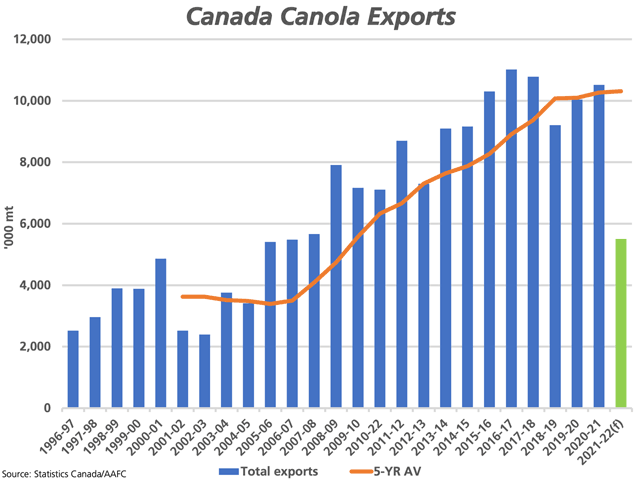Canada Markets
March Spring Wheat Consolidates
The March MGEX spring wheat chart shows a higher close for a second day on Nov. 23, up 13 3/4 cents to $10.45 1/2/bushel (bu), while gaining 31 cents during the first two days of this week. This is seen when March soft red winter wheat is up 33 1/4 cents over two sessions and March hard red winter wheat is up 32 3/4 cents, while SRW, HRS and European milling wheat all reached fresh contract highs this session.
Despite the smaller North American spring wheat crop, trade has consolidated within the previous week's range for a second week, with the weekly chart showing a consolidation chart pattern formed over four weeks that bears watching.
P[L1] D[0x0] M[300x250] OOP[F] ADUNIT[] T[]
As seen by the red line on the first study, the March/May futures spread has weakened from a late-October high of 31 1/2 cents to 7 3/4 cents today (March trading over the May contract). This remains a bullish inverse, but this sentiment is seen waning during the month.
The blue bars of the histogram in the second study, shows speculators or noncommercial traders paring their bullish net-long position in each of the past two weeks, although this position remains close to the largest bullish position on record.
The brown line in the lower study shows the HRS/HRW cash price spread in the U.S. unchanged on Tuesday at $1.48/bu (HRS over HRW). This is based on the spread between DTN's National Spring Wheat Index and National HRW index. This is the largest spread seen on this date in four years, while is stronger than the five-year average of $1.14/bu. As a proxy for the demand for high protein wheat, this is down sharply from the $2.54/bu calculated for Nov. 2, although the spread was unchanged on Nov. 23, with a potential to stabilize.
Deliverable HRS stocks in the U.S. remain bearish feature for this market. These stocks are reported at 24.472 mb (666,013 metric tons) as of Nov. 23, down from the previous week but 6.8% higher than this time last year and 11.1% higher than the five-year average.
Cliff Jamieson can be reached at cliff.jamieson@dtn.com
Follow him on Twitter @Cliff Jamieson
(c) Copyright 2021 DTN, LLC. All rights reserved.






Comments
To comment, please Log In or Join our Community .